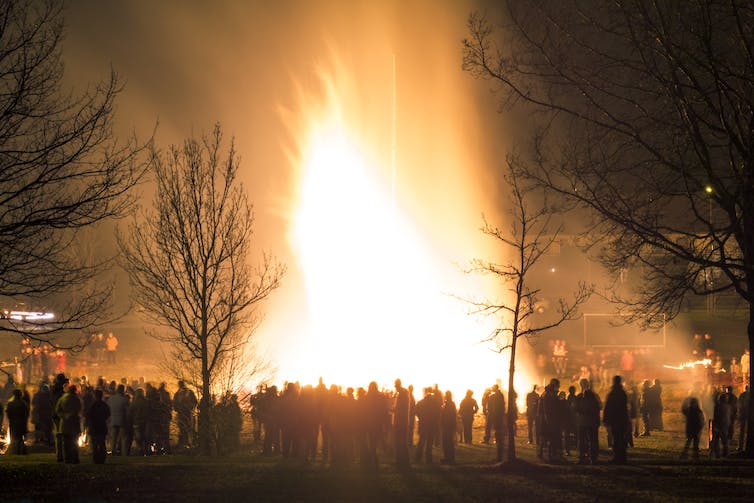Yule will be celebrated by Wiccans and many other Pagans in the Northern Hemisphere on Dec. 21, the day of the winter solstice. For Pagans, the shortest day of the year marks the end of the descent into darkness and the beginning of the return of the light as the days begin to get longer after the solstice. Like many other religious holidays, Yule is a celebration of light.
As a sociologist who has been studying contemporary Pagans for more than 30 years, I know that Yule is also a time of reflection. The cold dark period of the year, many Wiccans feel, encourages us to not only spend more time at home, but also to become more reflective about our lives – and often about spirituality.
Marking the beginning of winter
Wicca is a minority religion that is part of the larger contemporary Pagan movement. Pagans normally define their religion as earth-based. By this they mean they see divinity in nature and connect their rituals to the changing seasons. All forms of contemporary Paganism look to pre-Christian European religions to inform their religious practice.
Wiccans regularly call themselves Witches, although not all Witches are Wiccans. The religion puts more emphasis on participating in rituals and having spiritual experiences than on particular beliefs.
Yule is one of the eight major holidays or “sabbats” that divide the year into the beginning and peak of each season. Yule denotes the beginning of winter. There is a ritual for each holiday that focuses on what is occurring in nature and correspondingly in people’s lives. At this time of year, people are experiencing both the height of darkness and the knowledge and hope that the light and warmth will return.
When I began my research about this religion in 1986, the norm for contemporary Pagans was to form into small groups, which Wiccans call covens. These spiritual congregations meet regularly for holidays, learning and discussions. While covens still exist, the primary way of practicing is as “solitaires.” These solitary practitioners may join others for one or more of these sabbats, or they may do their own ritual.
Yule rituals
I have always found the group rituals I have attended for Yule, as part of my research, to be joyous occasions.
As with all Wiccan rituals, participants gather in a circle. Those leading the ritual sanctify the space by walking around the circle chanting and sprinkling salt and water. This is followed by representations of the four elements – water, fire, air and earth. Often, a candle is lit to denote fire, a shell to represent water, a feather for air, and a crystal for earth.
Divinities or spirits are called into the circle to help with the ritual. There is always a reading or meditation related to the holiday and the changes that are occurring in the natural world at that season.
At Yule there is always a fire or lights to symbolize the returning sun. In one outdoor ritual I attended, a bonfire was built in a clearing in the woods. The night was cold and dark, and there was snow on the ground. The circle was formed around the fire.
Drepicter/iStock via Getty images plus
However, most of the rituals I have attended, particularly for Yule, are indoors, and fires are made in cauldrons, or by lighting candles. However, at one large ritual I attended, there was a large, bright, yellow-and-orange paper mache image of the sun on a long stick.
All of the attendees were asked to wear shiny clothing. Some people had glitter in their hair and on their face; some wore golden or silver clothing; the room and the people glowed with light and sparkles. At other rituals I have attended, people were asked to bring a small candle or light. In all instances the participants are symbolically part of the returning light, either by carrying a light or, in this one ritual, reflecting the room light.
The reading or meditation at Yule rituals normally includes reference to the darkness of winter that people experience around this time of year.
Light during darkest time
The rituals normally end with dancing and chanting. At the ritual in which there was a large representation of the sun, all the participants danced joyously behind the person carrying the sun, chanting about the sun returning.
The ritual I attended in the forest ended with everyone dancing around the fire before making sure it was completely put out. We then turned on our flashlights and found our way in the dark out of the woods.
The juxtaposition of the celebration of the returning sun and having the time and inclination for reflection during a dark and cold time makes this an interesting holiday.

